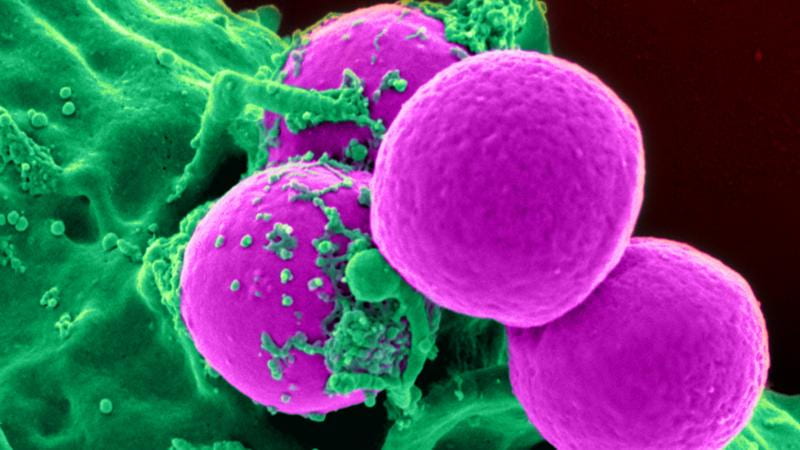MRSA IN THE FAMILY – MINE
By: Medill Reports

That’s right – that nasty-looking, flesh-eating, antibiotic resistant infection that is on the rise across the nation has stricken the armpit and face of two of my family members in the past year. It all started over Labor Day weekend last September. My sister called to explain that what she thought were ingrown hairs in her left armpit turned out to be an infection she’d let fester for three weeks. “I just kept thinking it would go away, that I was just being a wuss, but it got to the point that I couldn’t put my arm down anymore without it being really painful,” she said. Of course, per usual Keane family decorum, we immediately started making up jokes about her “pit.” Aunt Cooky O’Connor sang, “On top of Old Smokey, all covered in puss, Megan has MRSA and that really sucks.”
My sister finally went to Urgent Care where they lanced, drained and took a culture of her abscesses. The cultures came back positive for MRSA. “I kept asking everyone, ‘How could I have gotten this?’” she said. “I heard it was from skin-on-skin contact and I hadn’t had skin-on-skin contact with anyone. The [doctor] just kept saying, ‘This is becoming more and more common; you could get it from anything. Sometimes it’s dormant on your body and an infection just occurs.’” Community-associated MRSA (Methicillin-resistant Staphylococcus aureus) is the case of it that you don’t get while in a hospital. And it is becoming a serious public health issue. The antibiotic-resistant staph infection used to be associated only with hospital stays, but it started spreading in the community in the 1980s, according to the most recent data from the Centers for Disease Control and Prevention. Some 78 percent of all outpatient cases of staph were caused by MRSA, CDC statistics show.
The next Keane to fall to the infection was my dad. His infection began in November in a common place for MRSA bacteria to grow – near his nose. Like my sister, he just thought it was a zit and began to pick at it. Luckily, he was on a work-related golf trip in the company of doctors as his abscess continued to grow. He says his cardiologist companions were grossed out enough to prescribe cephalexin, an antibiotic used to treat skin infections in people with sensitivity to penicillin. MRSA is typically resistant to first-line antibiotics such as penicillin. My mom described his face as nearly unrecognizable when she picked him up from the airport. Of course, all this MRSA flying around my family had me examining every bump and spot on my body with concern. Could I have MRSA too?
“If you’re talking about a true hereditary predisposition, in the vast majority of cases the answer is no,” said Dr. Tina Tan, a professor of pediatrics at Northwestern University’s Feinberg School of Medicine. One of Tan’s specialties is infectious diseases. Tan explained that a more likely way for MRSA to spread around a family is simply contact with someone who has the infection, even if it’s dormant. MRSA can live on the skin and on inanimate objects for a long period of time. “If there are people in your household who’ve had MRSA or frequently have MRSA, you are more at risk,” Tan said. “You can pick up MRSA because a family member has it, but it can do nothing until there’s a portal for the infection to get in.” I’ve obviously been in contact with some of these carriers in the past year, so I asked Tan if there was anything I or my other non-MRSA-fied family members should do to prevent contracting the disease. The most typical method for preventing MRSA is “decolonization,” which means rubbing antibiotic ointment in your nose and bathing from the neck down in antiseptic water for about a week. “If one person in the family has had only one infection once, there is no need to decolonize the entire household,” Tan said. “If more than one person in the household has had an infection and it begins ping-ponging around the family, then everyone should be decolonized.”
So far in 2011, the Keanes have been MRSA-free, so I think I’m going to take a pass on the antiseptic baths in favor of continuing to vigilantly monitor every bump and spot on my body. – blog by
Erin Keane, graduate student reporter, Medill School of Journalism, Northwestern University
